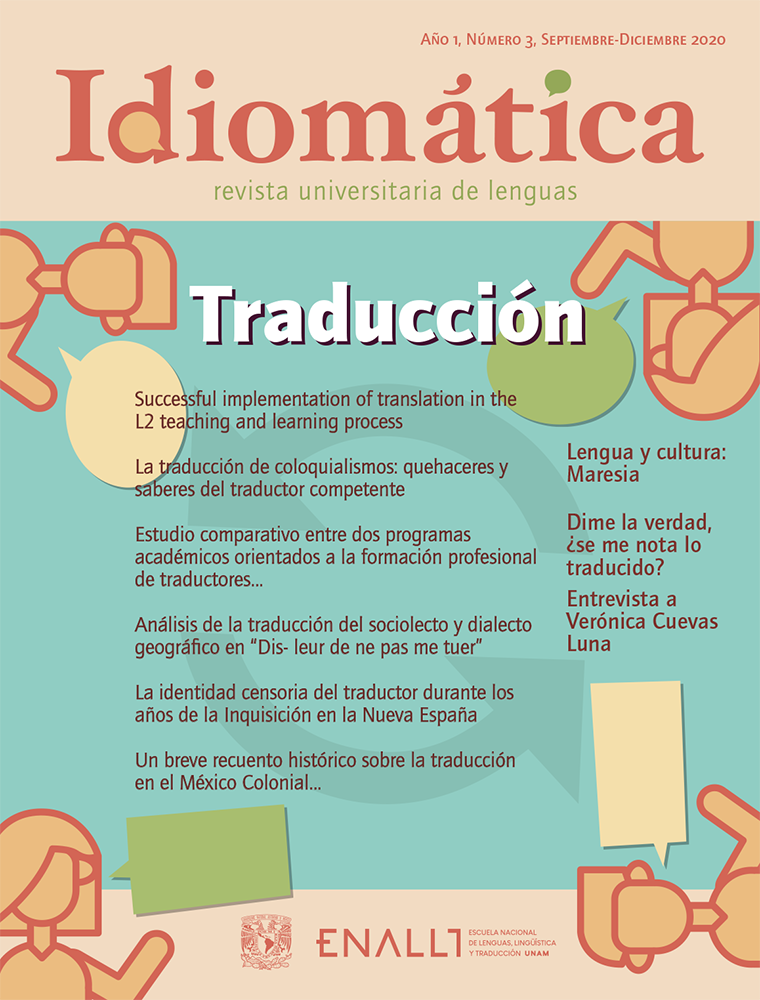Successful implementation of translation in the L2 teaching and learning process
Published 2021-04-01
Keywords
- second language teaching and learning,
- mental translation,
- classroom discourse,
- pedagogical translation; code-switching
Downloads
How to Cite
Abstract
This article seeks to clear up some of the confusion surrounding the use of translation in the teaching and learning of second and foreign languages (L2) and challenge the misconceptions regarding its detrimental effects on the learning process. First, it delineates three ways in which translation can manifest itself: 1) as an internal cognitive process in the learner’s mind, 2) as a type of bilingual verbal expression, mostly in the form of classroom discourse produced by the teacher, and, 3) as an ensemble of teaching methods that knowingly involves translation in the L2 classroom. It then goes on to argue how, in each of these cases, translation can be employed to benefit rather than impede the teaching and learning process by consciously assuming a socio-constructivist cognitivist approach where, rather than vilifying the instrument, the focus shifts to its suitable application.

